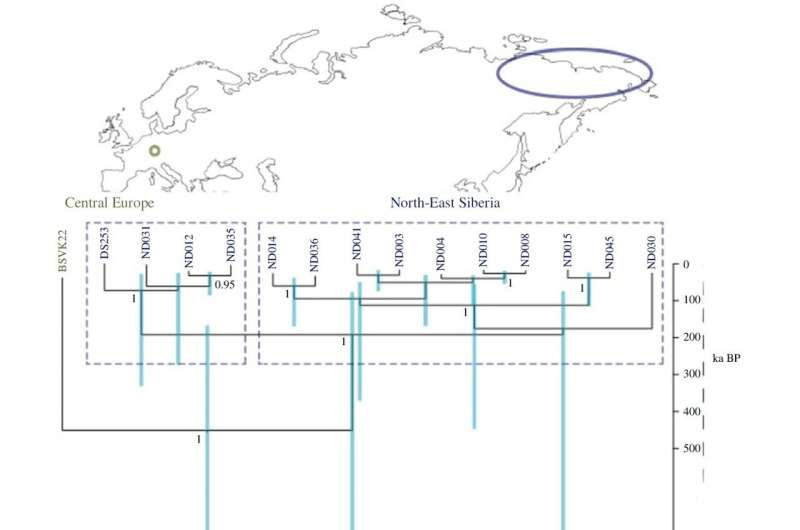November 1, 2023 report
This article has been reviewed according to Science X's and . have highlighted the following attributes while ensuring the content's credibility:
fact-checked
peer-reviewed publication
trusted source
proofread
Ancient hyena droppings reveal genome of Ice Age woolly rhino

A team of paleontologists, evolutionists and geoscientists affiliated with several entities in Germany has extracted Ice Age woolly rhino DNA from fossilized excrement samples (coprolites) found in a cave in Germany. Their study is reported in the journal Biology Letters.
Prior research has suggested that there were two species of Ice Age woolly rhinos—one lived in Eurasia (the Siberian woolly rhinoceros), the other Europe (the European woolly rhinoceros). Prior research has also shown that the Eurasian variety survived until approximately 14,000 years ago—it is not known how long ago the European variety disappeared.
In this new study, the research team sought to learn more about the history of the European woolly rhinoceros. To that end, they searched for and found coprolite samples left behind by ancient hyenas—animals that were known to attack and feast on a wide variety of large animals, including the woolly rhino. The samples were found in two caves in layers of soil dated back to the Middle Paleolithic; one at Bockstein-Loch, the other Hohlenstein-Stadel. Both are located in the Lone Valley.
The two coprolite samples were brought back to a lab for study. As part of that study, the research team isolated the DNA of both the hyena and at least one woolly rhino from each sample. Despite severe degradation of the DNA, the team was able to assemble the mitochondrial genome of a woolly rhino—the first time this had been done. And it in studying their assemblage, they observed that the two types of woolly rhinos had split from a common ancestor approximately 45,000 years ago.
The research team concludes its effort by suggesting that study of fossilized dung to learn more about the ancestry of ancient creatures is an overlooked science.
More information: P. A. Seeber et al, The first European woolly rhinoceros mitogenomes, retrieved from cave hyena coprolites, suggest long-term phylogeographic differentiation, Biology Letters (2023).
Journal information: Biology Letters
© 2023 Science X Network




















